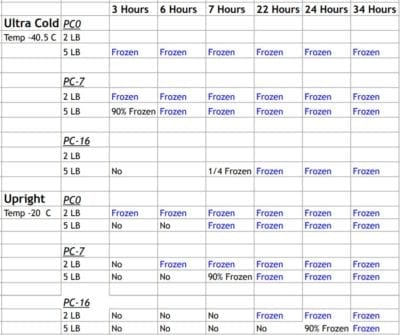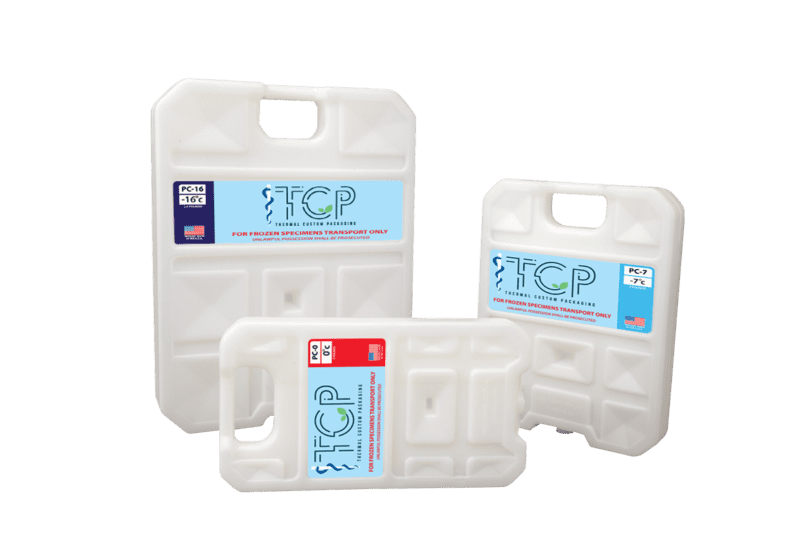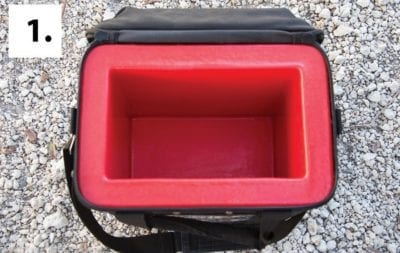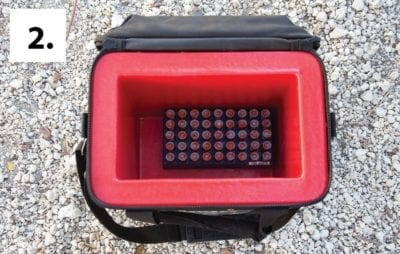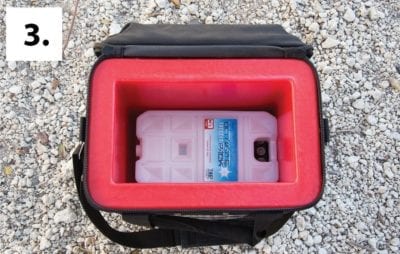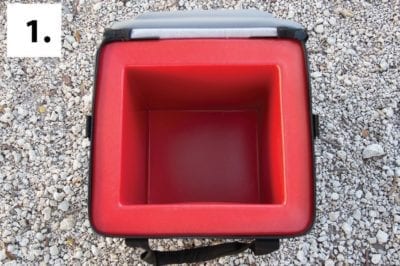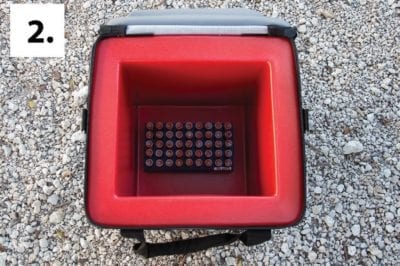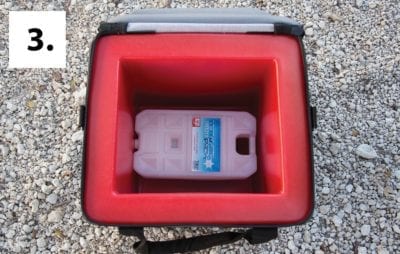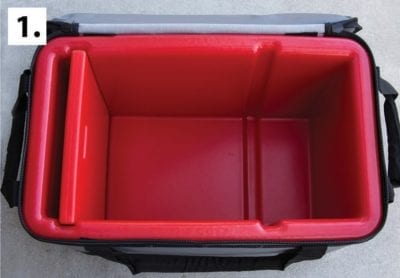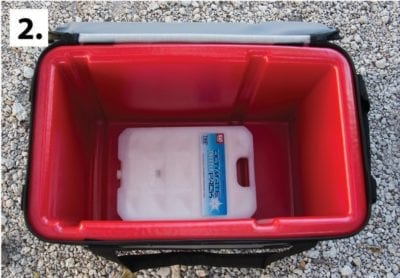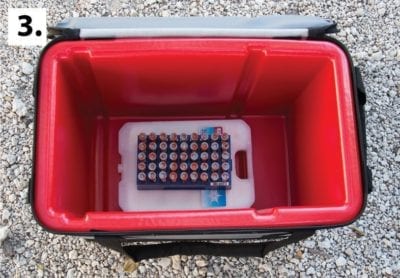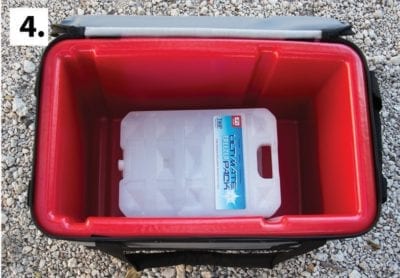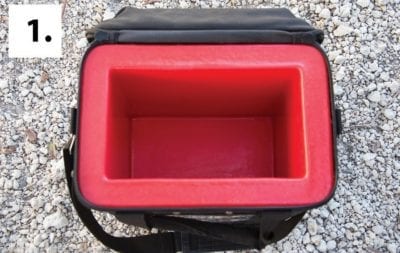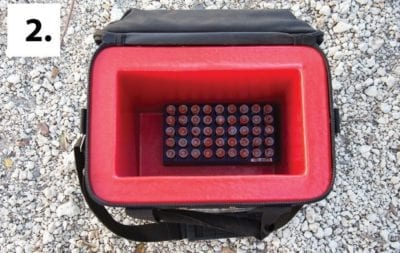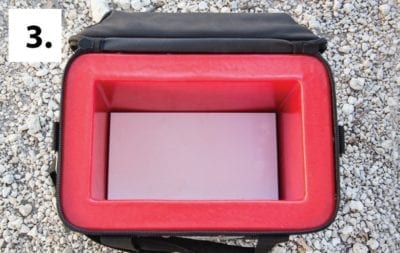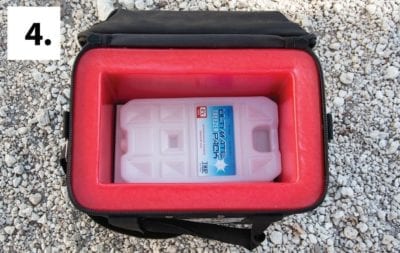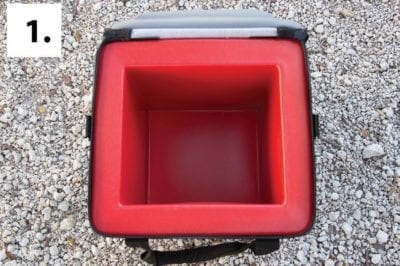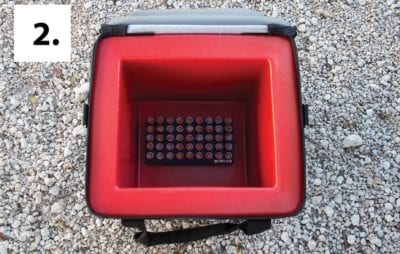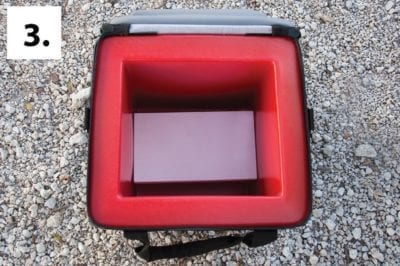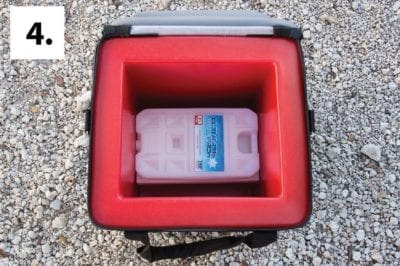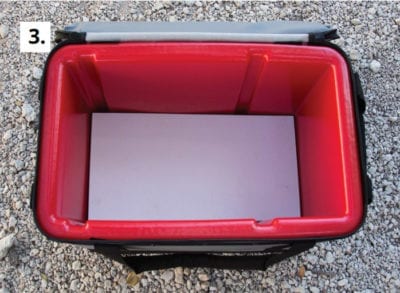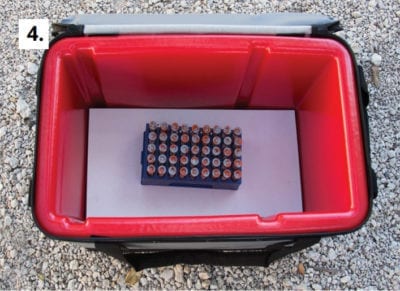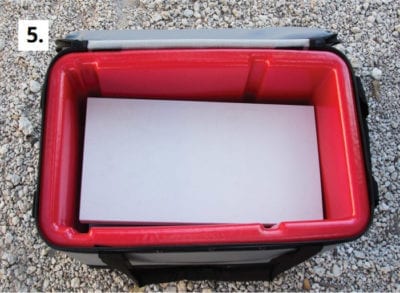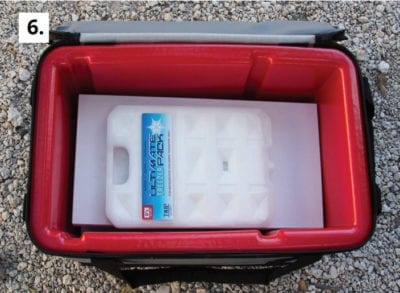TCP Training Video
Learn how to use your TCP medical thermal products
How to Use
TCP insulated Totes combined with our various Phase Change Materials (PCMs) can transport specimens refrigerated, frozen, or ultra-cold. The PCMs are able to store large amounts of energy maintaining precise temperatures. Currently, TCP is providing refrigerated PC0 engineered to maintain 0° Celsius, PC-7, PC-16 engineered to maintain -7° and -16° Celsius respectively, and ultra-cold PC-21 engineered to maintain -21° Celsius.

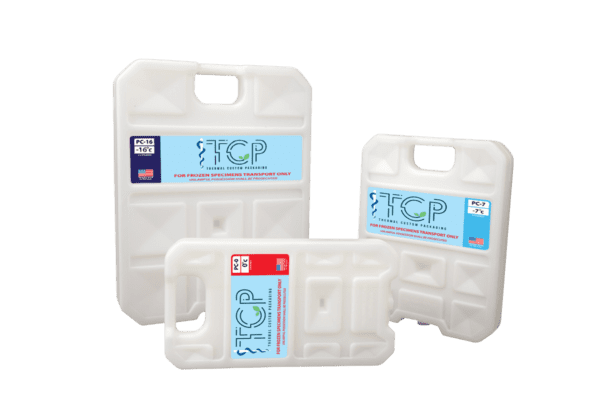
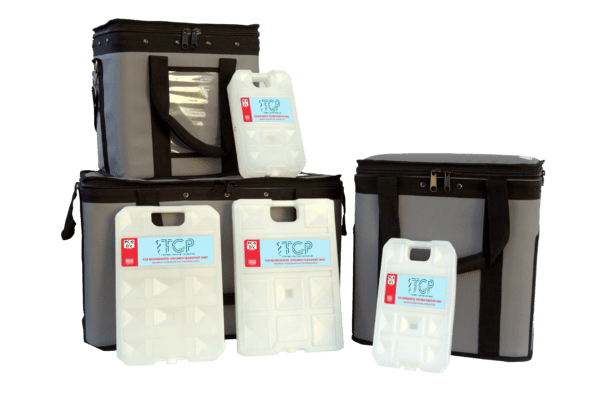
Prior to use, the PC0 , PC-7 PC-16 and PC-21 must first be frozen solid. PC0 and PC-7 freeze easily in a typical household freezer (around -19 Celsius). We recommend freezing the PCM for 24 hours before use (See Freezing Times for TCP PCMs Chart below). The units should be rock hard and turn from clear liquid inside to a cloudy color. PC-16 is more difficult to freeze and requires that the freezer be colder than -16 Celsius. Some household freezers may only reach -15° Celsius and therefore the PC -16° will not freeze. The freezer must be at least -19° Celsius, otherwise, the PCM may take several days to freeze. In household freezers that reach a measured temperature of -20° Celsius, the PC-16 will freeze in 24 hours. The PC-16 must become cloudy in color and rock hard, otherwise, it will not perform correctly. Please see photographs below showing frozen and non-frozen PCMS. PC-21 requires an ultra-cold freezer to prepare. In a -45° Celsius freezer, it is rock hard in 34 hours or less. Of note, PCMs stacked together will take longer to freeze.
Maintaining refrigerated specimens
In the United States, blood and blood products must be maintained at 1° to 6° Celsius for storage, and 1° to 10° Celsius for transport. TCIP recommends using PC0 with the custom insulator between the blood units and the PCM to maintain the blood at it’s desired temperature. More importantly, our PCMs, Totes, and insulators prevent blood from falling below 1° Celsius, which is out of specification.
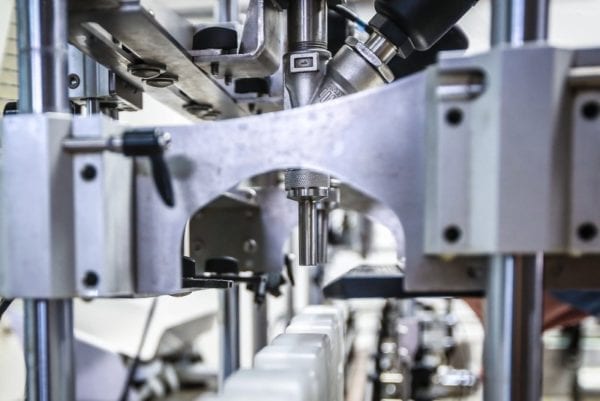
Maintaining frozen specimens
Maintaining frozen specimens
Plasma and most blood products are approximately 92 percent water with some salts and proteins. These products remain frozen just under 0° Celsius. TCP recommends using PC-7 if the facility has older household freezers or under counter laboratory freezers, so that the PCM will freeze easily. Of course, any of our frozen PCMs will maintain blood specimens frozen. In the US, regulations require maintaining allografts at -21° Celsius if they are not used and if the desire is to return them to long-term storage. Therefore, the PC-21 is the perfect fit for allograft transport. One of our largest US health care systems also uses PC-21 to transport allergy specimens. PC-21 has less energy than PC-16 and PC-7, and will maintain targeted temperatures for a shorter duration ( PC-21 has 222 kJ/kg latent heat of fusion, PC-7 has 290 kJ/kg, and PC-16° has 289 kJ/kg ).
Preventing specimens becoming frozen
In colder environmental temperatures, it is sometimes difficult to prevent specimens from freezing. Canada requested that TCP address this issue. Testing was done in Totes with thicker insulation which did maintain the specimen from freezing longer but only by approximately 20 percent. TCP is currently testing PC29 specifically for this purpose. Our goal is to maintain specimens above freezing for significantly longer. This product has been used in the Arctic Circle to prevent products from freezing for the US military. PC29 is prepared at 45° Celsius until it melts, then placed in the Totes. Initial testing showed that PC 29, when placed with the specimen in one of TCP’s Small Totes, maintained the specimen between 20° to 24° Celsius in a frozen environment fluctuating between-14.6° and -18.8°Celsius. For this test, 3 pounds of PC29 were placed above the specimen and 3 pounds of PC29 below the specimen. In the chart below, the red line represents the specimen temperature and the black line is the environmental temperature. PC29 is a new product and in limited supply.
Setting up Specimen Transport Totes
The numbered photos below show exactly how to setup Small, Medium, and Large Specimen Transport Totes.
Small Tote
How to load a small tote with specimens.
Medium Tote
How to load a medium tote with specimens.
Large Tote
How to load a large tote with specimens.
BTU System
Small, medium and large totes for whole blood transportation.
When transporting whole blood that must be maintained between 1° to 10° Celsius with the Small and Medium Totes, TCP recommends placing our custom insulators above the specimens, then the PCM so the PC0 and the blood do not touch. This will prevent the blood from becoming colder than 1° Celsius.

